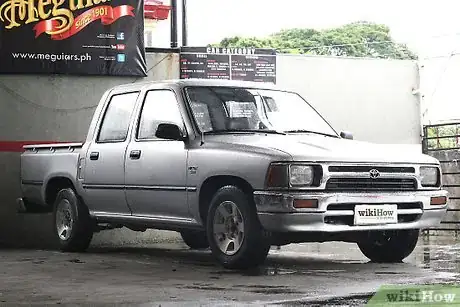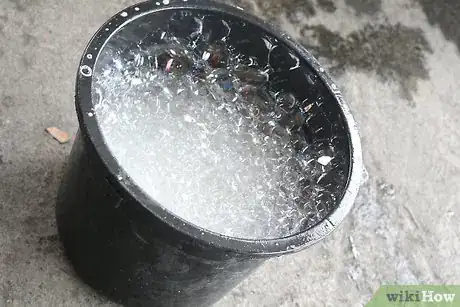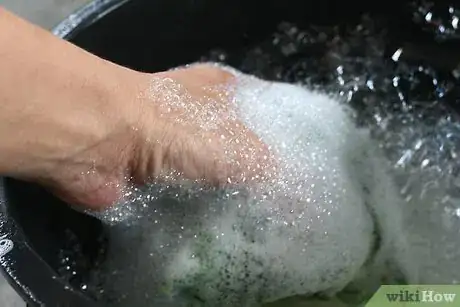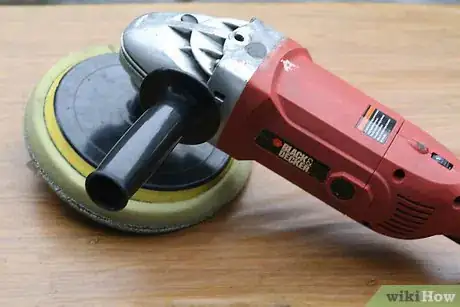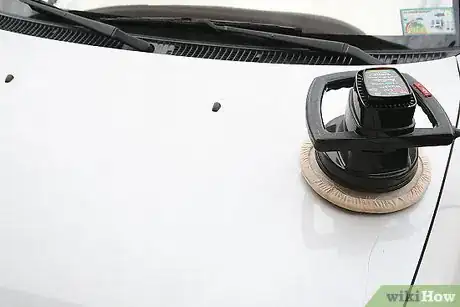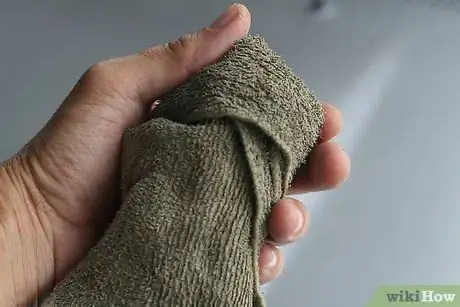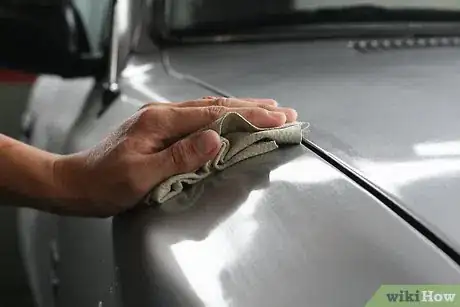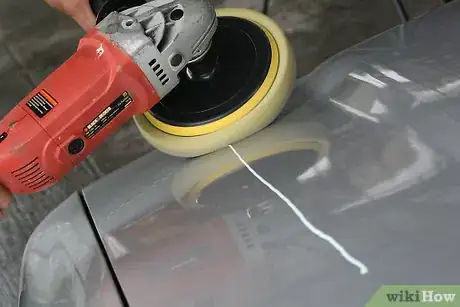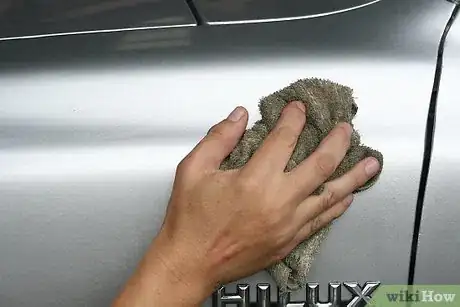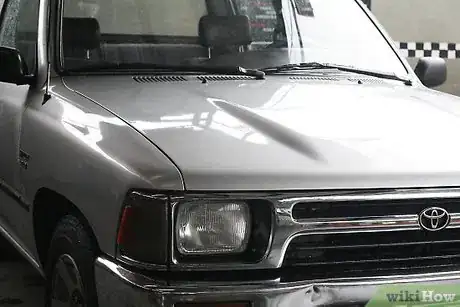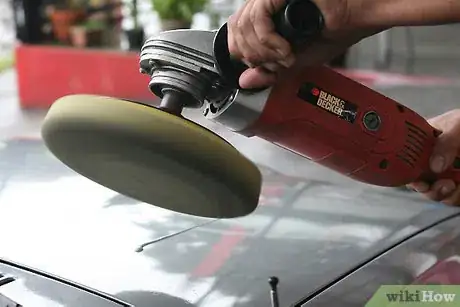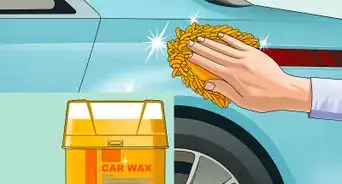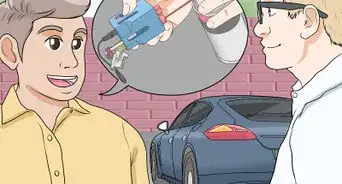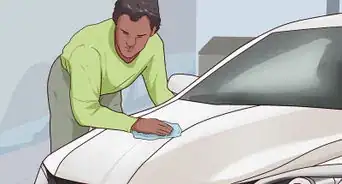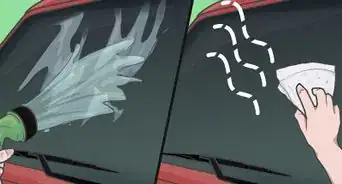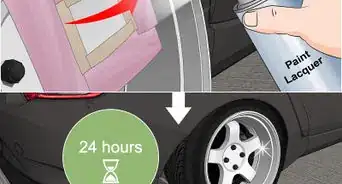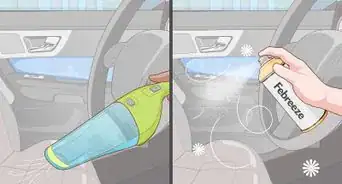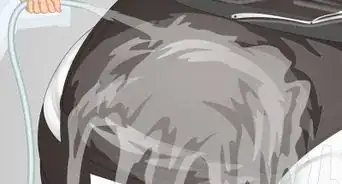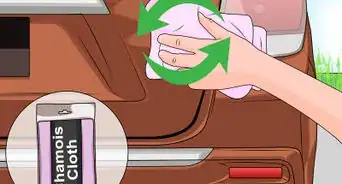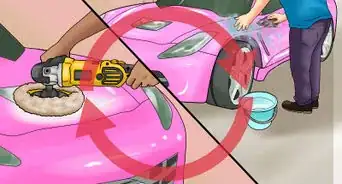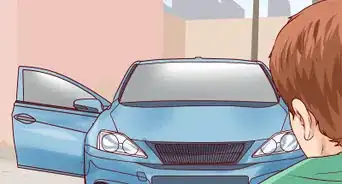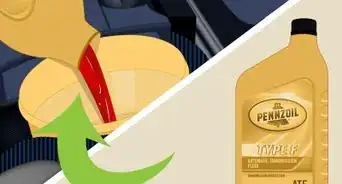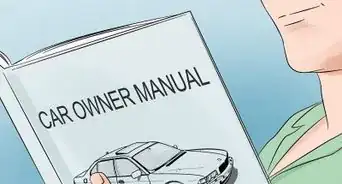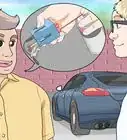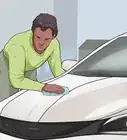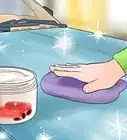This article was co-authored by Chad Zani and by wikiHow staff writer, Eric McClure. Chad Zani is the Director of Franchising at Detail Garage, an automotive detailing company with locations around the U.S. and Sweden. Chad is based in the Los Angeles, California area and uses his passion for auto detailing to teach others how to do so as he grows his company nationwide.
wikiHow marks an article as reader-approved once it receives enough positive feedback. In this case, several readers have written to tell us that this article was helpful to them, earning it our reader-approved status.
This article has been viewed 433,363 times.
Buffing a car is a process that literally removes a small layer of paint from a car's finish, exposing a fresher layer of paint underneath. This process restores the car's original luster and will improve the car's overall appearance. If little nicks and scratches are ignored, rust can form and this will lessen the vehicle's beauty and reduce the car's value. By buffing a car every 2 to 3 months, the car will be more aesthetically pleasing, and will maintain its finish longer.
Steps
Wash the Car Thoroughly
-
1Park the car in a shady spot. Make sure the surface of the car is cool. This will help prevent soap stains from appearing on the car's surface.
-
2Place the soap in a gallon-sized bucket. Add water until the bucket is filled and the water is sudsy. Use only car wash-specific soaps. Read the soap packaging for the amount of soap to dispense.Advertisement
-
3Take a large sponge and submerge it into the soapy water. Remove the sponge, squeeze out about half of the water, place the sponge on the car and begin washing.
-
4Move the sponge in circular motions across the body of the car, paying special attention to crevices and cracks that may have dirt trapped.
- Start at the top of the car and work downward. Once the car has been completely cleaned, hose off all of the soap.
Choose a Buffer
-
1Use a high speed buffer to achieve the finest results. High speed buffers will eliminate surface scratches and blemishes completely, leaving behind a brilliant shine. However, training is recommended to master a high speed buffer. Improper use of a high speed buffer can strip the paint and damage the finish permanently by leaving swirls and scratches.https://www.wikihow.com/Buff-a-Car
-
2Select a random orbital buffer for great results and a nice sheen with minor effort. No training is required and the random orbital buffer is easy to use. Not all damage will be eliminated but the end result will be a great shine. Random orbital buffers also use significantly less compound than a high speed buffer, therefore a more cost-effective solution.https://www.wikihow.com/Buff-a-Car The results will not last as long as with a high speed buffer.
-
3Choose manual buffing if cost is an issue. However, manual buffing is the most labor intensive option that will give the least effective results. Manual buffing takes much longer than high speed and random orbital buffing and the finish will not last as long with manual buffing. Manual buffing requires the least amount of equipment, but requires the most of amount of product and time. The results are usually an uneven finish that will not last as long as alternative buffing means.
-
4Purchase a polishing or compound product that will achieve the desired results with your car. Compound is needed if there are deep scratches in the finish. Polisher is used if the body paint is in great shape already and just needs an increased shine. Product needs will also vary based on the car model, the car year, and the overall condition of the car. Both products can be used with the buffer. Get product recommendations from friends or reputable car aficionados.
Buffing
-
1Dry the car with a chamois or clean, soft towel. Work around the entire car to ensure the car is completely dry.
-
2Apply a generous amount of polisher or compound directly to the body of the car. Begin with the hood to examine results easily.
-
3Place the buffer on the polishing product and move the buffer around to spread the product evenly. Use small, circular motions to effectively buff each portion of the car.
- If using a powered buffer, turn the buffer on and move the buffer in firm, circular motions to work the entire product into the finish and reveal the shine.
- If manual buffing, apply extreme pressure while employing circular motions to work in the product.
-
4Continue buffing the product into the car's surface until it develops a sheen.
-
5Repeat the process over the entire surface of the car until the desired result is achieved.
Expert Q&A
Did you know you can get premium answers for this article?
Unlock premium answers by supporting wikiHow
-
QuestionWhat type of polisher should I use?
 Chad ZaniChad Zani is the Director of Franchising at Detail Garage, an automotive detailing company with locations around the U.S. and Sweden. Chad is based in the Los Angeles, California area and uses his passion for auto detailing to teach others how to do so as he grows his company nationwide.
Chad ZaniChad Zani is the Director of Franchising at Detail Garage, an automotive detailing company with locations around the U.S. and Sweden. Chad is based in the Los Angeles, California area and uses his passion for auto detailing to teach others how to do so as he grows his company nationwide.
Auto Detailing Expert
-
QuestionHow do you manually buff a car?
 wikiHow Staff EditorThis answer was written by one of our trained team of researchers who validated it for accuracy and comprehensiveness.
wikiHow Staff EditorThis answer was written by one of our trained team of researchers who validated it for accuracy and comprehensiveness.
Staff Answer wikiHow Staff EditorStaff AnswerYou’ll need a soft buffing cloth, such as a microfiber rag or foam applicator pad, and some polisher or wax. Buff in your wax or polisher using small, circular motions. You may need to repeat the process to get the desired finish. Just keep in mind it will take longer and be more strenuous than using an electric buffer.
wikiHow Staff EditorStaff AnswerYou’ll need a soft buffing cloth, such as a microfiber rag or foam applicator pad, and some polisher or wax. Buff in your wax or polisher using small, circular motions. You may need to repeat the process to get the desired finish. Just keep in mind it will take longer and be more strenuous than using an electric buffer. -
QuestionIs there a way to buff scratches out of a car?
 wikiHow Staff EditorThis answer was written by one of our trained team of researchers who validated it for accuracy and comprehensiveness.
wikiHow Staff EditorThis answer was written by one of our trained team of researchers who validated it for accuracy and comprehensiveness.
Staff Answer wikiHow Staff EditorStaff AnswerIf the scratches are small and shallow, then you can buff them out with polish. However, if the scratch is deep enough to cut through the paint (rather than just the topcoat), you’ll need a more serious touch-up. If you can snag the scratch with your fingernail, it may be too deep. For small, shallow scratches, apply polish with a buffer or by hand using a soft applicator.
wikiHow Staff EditorStaff AnswerIf the scratches are small and shallow, then you can buff them out with polish. However, if the scratch is deep enough to cut through the paint (rather than just the topcoat), you’ll need a more serious touch-up. If you can snag the scratch with your fingernail, it may be too deep. For small, shallow scratches, apply polish with a buffer or by hand using a soft applicator.
Warnings
- Do not use household detergent to wash a car. The ingredients are too abrasive and will strip the finish of the car.⧼thumbs_response⧽
- Before using the buffer, check the buffer and the car's surface for bits of sand or dirt. Any trace of grit can permanently scratch the car's finish if buffed into the car.⧼thumbs_response⧽
Things You'll Need
- Random orbital, high speed or manual buffer
- Gallon sized bucket
- Car wash soap
- Large sponge
- Water
- Masking Tape
- Chamois or clean, soft towel
References
About This Article
To buff your car, first wash it thoroughly with soapy water and microfiber towels. You want it to be as clean as possible since any dirt could cause scratches when you start buffing. Once your car is dry, you can use either a high-speed buffer or an orbital buffer to buff it. A high-speed buffer will be faster and provide the best results, but there’s also a greater risk of damaging the paint if you’re not careful. If you use a high-speed buffer, practice on an inconspicuous area first until you get the hang of it. An orbital buffer will take longer to use, but it’s less likely to damage the paint. Apply a small amount of buffing compound to the pad on the buffer, then buff the surface of your car using even, circular movements, keeping the buffer moving at all times. Be gentle and keep a firm grip on the buffer to avoid damaging your car’s finish. Continue buffing until your car is as smooth and shiny as you’d like. When you’re finished, it’s a good idea to wax your car to help protect the finish. Try to buff your car about once a year to keep it looking brand new. To learn how to wash your car thoroughly before buffing it, read on!
